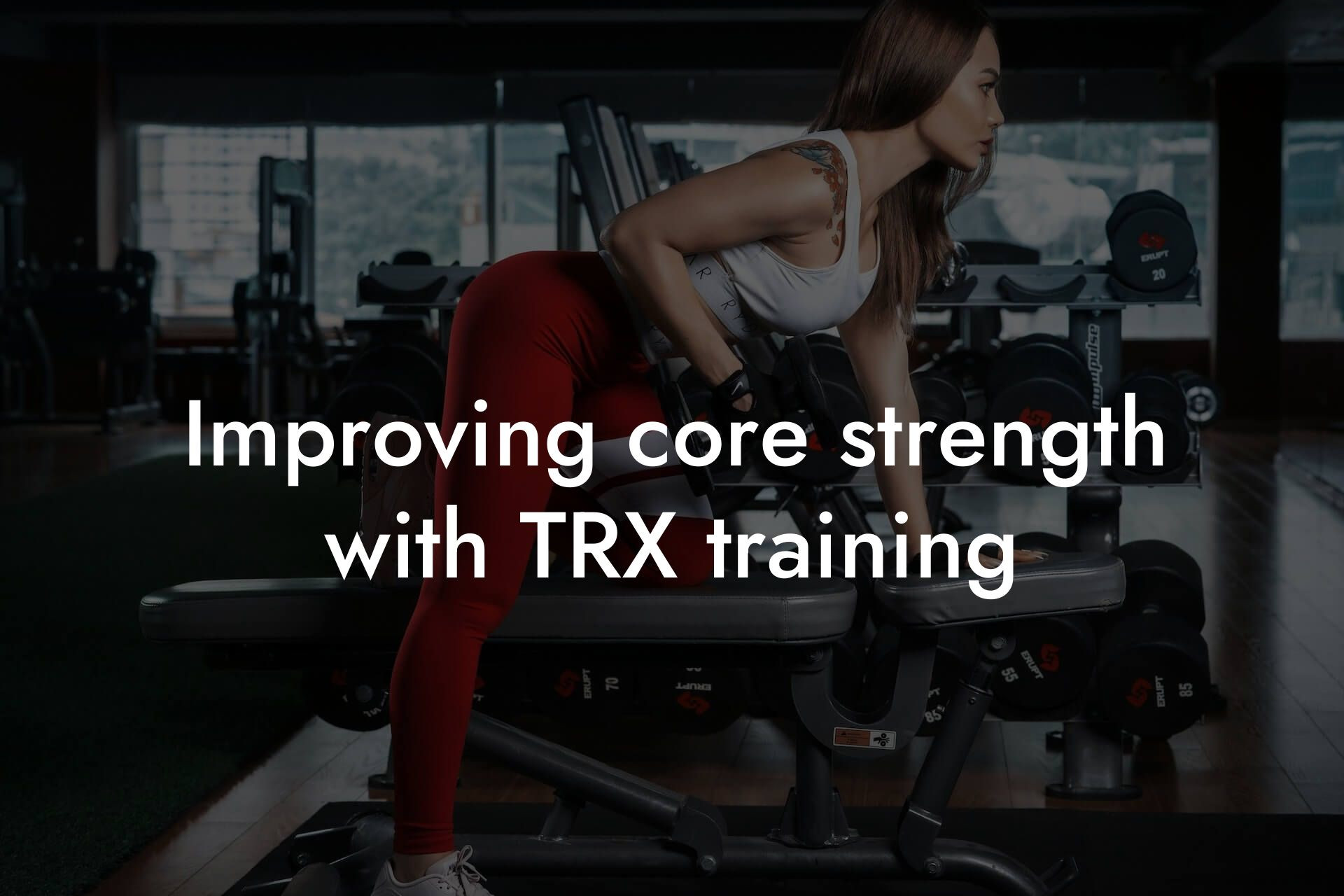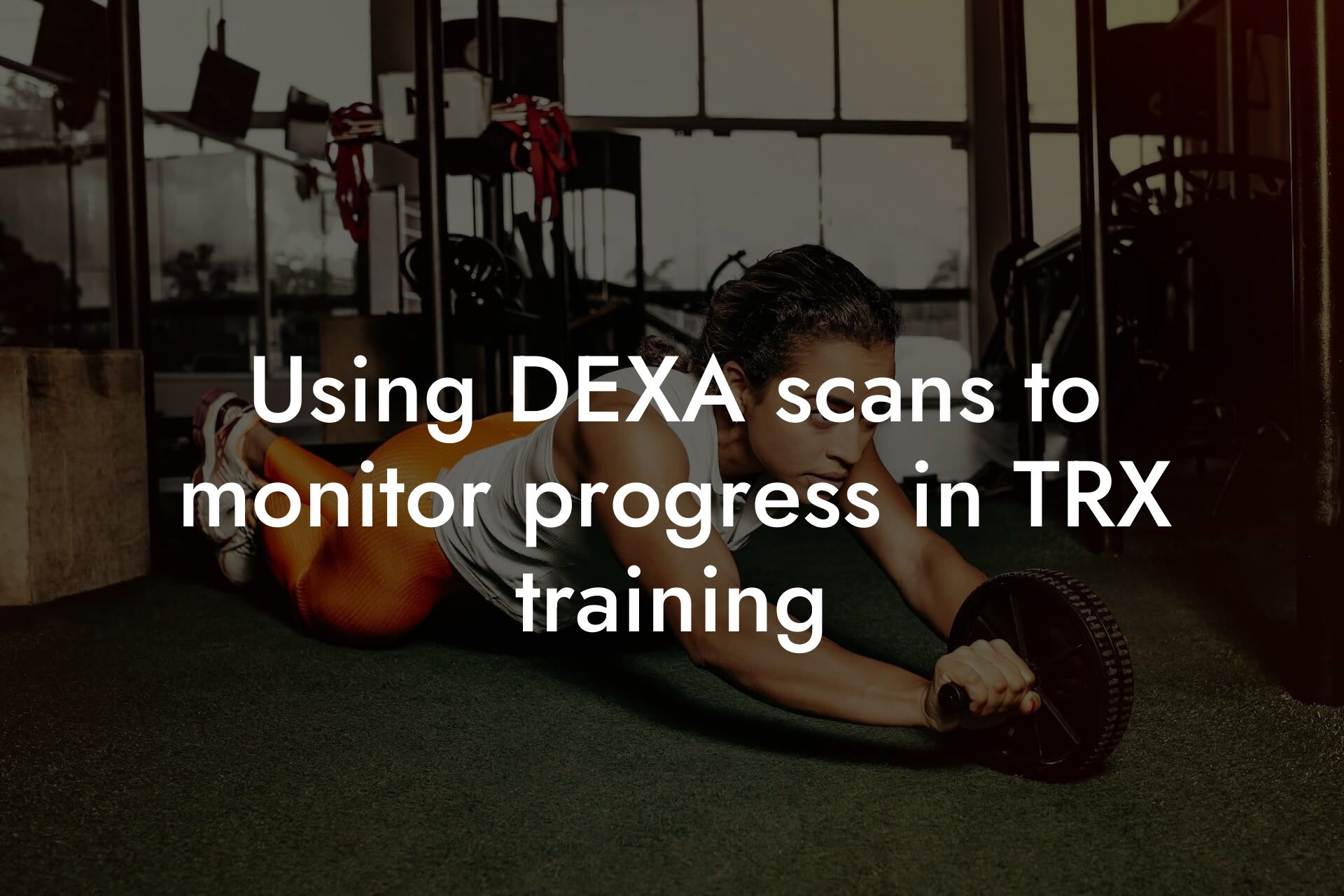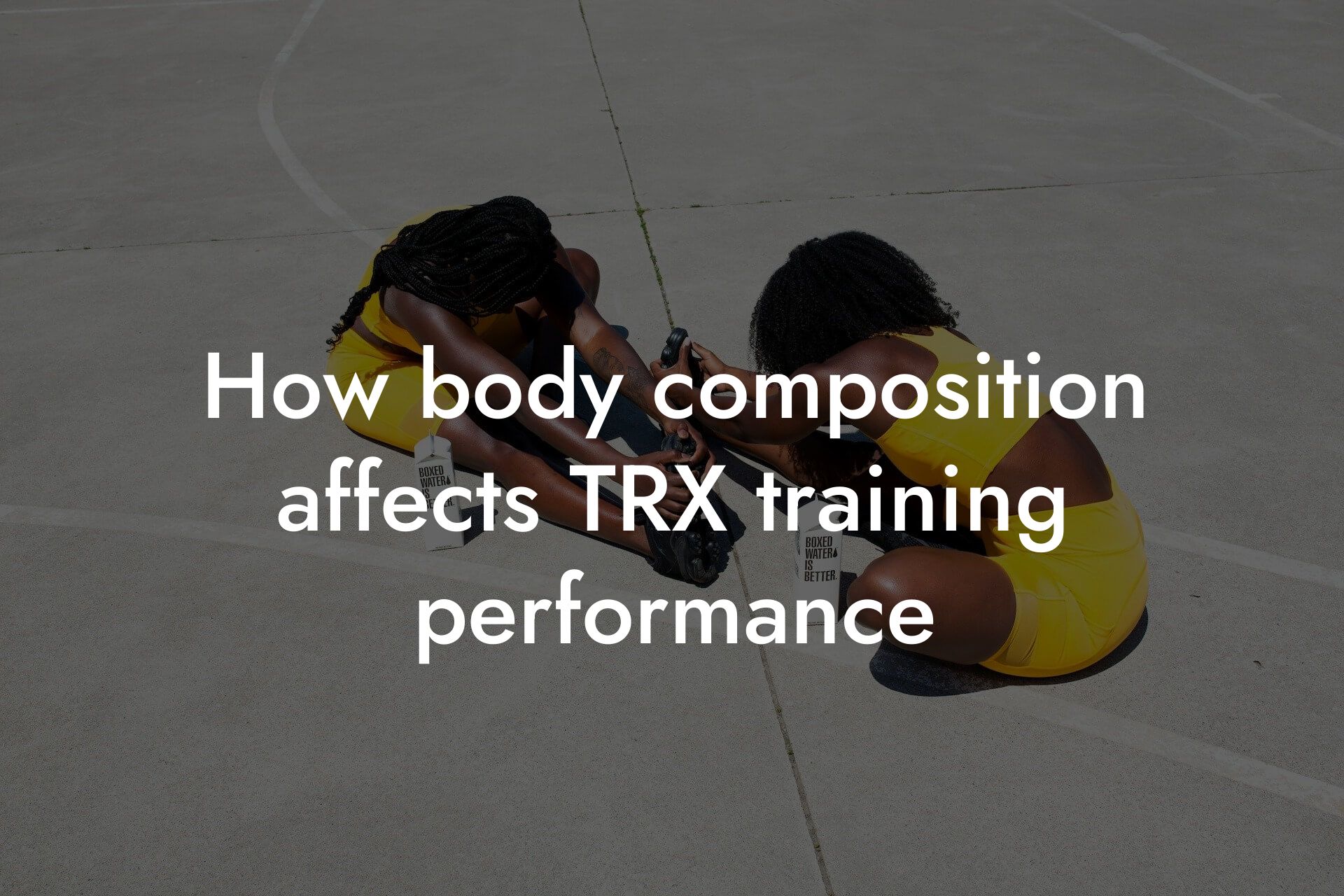As a high-earning professional, you understand the importance of maintaining a healthy and fit physique. Not only does it boost your confidence, but it also enhances your overall well-being and productivity. At Tano Performance Group, we believe that incorporating strength training into your fitness routine is essential for achieving your goals. In this article, we'll delve into the world of TRX exercises and provide you with expert tips to help you get the most out of your strength training sessions.
Table of Contents
- What is TRX and How Does it Work?
- Benefits of TRX Exercises for High-Earning Professionals
- Essential TRX Exercises for a Full-Body Workout
- TRX Exercise Tips for Beginners
- Advanced TRX Exercises for Increased Challenge
- Common Mistakes to Avoid in TRX Exercises
- Integrating TRX Exercises into Your Fitness Routine
- Frequently Asked Questions
What is TRX and How Does it Work?
TRX, or Total Body Resistance Exercise, is a form of suspension training that uses your body weight and gravity to provide resistance. It's a versatile and effective way to improve your strength, flexibility, and balance. TRX exercises involve using a suspension trainer, which consists of a strap and a handle, to perform a variety of movements that target different muscle groups. By adjusting the angle of your body and the position of the strap, you can modify the intensity of the exercise to suit your fitness level.
Benefits of TRX Exercises for High-Earning Professionals
As a busy professional, you're likely short on time and need a workout that delivers results quickly. TRX exercises are an excellent choice because they:
- Improve functional strength, which translates to everyday activities and sports performance
- Enhance flexibility and mobility, reducing the risk of injury
- Boost cardiovascular fitness and burn calories
- Can be modified to suit different fitness levels, making it accessible to everyone
- Are time-efficient, allowing you to fit in a effective workout in as little as 20-30 minutes
Essential TRX Exercises for a Full-Body Workout
A well-rounded TRX workout should include exercises that target different muscle groups. Here are some essential TRX exercises to get you started:
- Chest Press: Targets the chest muscles, improving upper body strength
- Inverted Row: Works the back and arms, enhancing posture and overall strength
- Bicep Curl: Isolates the biceps, improving arm strength and definition
- Tricep Dip: Targets the triceps, enhancing arm strength and stability
- Plank: Engages the core, improving stability and overall strength
- Lunge: Works the legs, glutes, and core, enhancing lower body strength and balance
- Shoulder Rotations: Targets the shoulder muscles, improving flexibility and mobility
TRX Exercise Tips for Beginners
If you're new to TRX exercises, it's essential to start with proper form and technique to avoid injury and get the most out of your workout. Here are some tips to keep in mind:
- Start with shorter straps and gradually increase the length as you become more comfortable
- Focus on slow and controlled movements, avoiding jerky or bouncy motions
- Engage your core and maintain a straight line from head to heels
- Use your body weight to control the movement, rather than relying on momentum
- Begin with lower reps and sets, gradually increasing the intensity as you build strength and endurance
Advanced TRX Exercises for Increased Challenge
Once you've mastered the basics, it's time to take your TRX workout to the next level. Here are some advanced exercises to challenge your strength and endurance:
- Single-Leg Squat: Targets the legs, glutes, and core, enhancing balance and stability
- Burpee: A full-body exercise that combines strength, endurance, and agility
- Side Plank: Engages the core and improves overall strength and stability
- TRX Crunch: Targets the abs, improving core strength and definition
- TRX Fly: Works the chest and shoulders, enhancing upper body strength and mobility
Common Mistakes to Avoid in TRX Exercises
Even with proper form and technique, it's easy to make mistakes that can compromise your workout or lead to injury. Here are some common mistakes to avoid:
- Letting your body sag or arch, rather than maintaining a straight line
- Using momentum to complete the exercise, rather than relying on your own strength
- Failing to engage your core and maintain proper posture
- Not adjusting the strap length or angle to suit your fitness level
- Not warming up or cooling down properly, increasing the risk of injury
Integrating TRX Exercises into Your Fitness Routine
To get the most out of your TRX workout, it's essential to incorporate it into your overall fitness routine. Here are some tips to help you do so:
- Aim to do TRX exercises 2-3 times per week, allowing for at least one day of rest in between
- Combine TRX with cardio exercises, such as running or cycling, for a well-rounded workout
- Incorporate TRX into your strength training routine, targeting different muscle groups each day
- Use TRX as a warm-up or cool-down for your workout, improving flexibility and mobility
TRX exercises are an excellent way to improve your strength, flexibility, and overall fitness. By incorporating these exercises into your routine, you'll be able to achieve your fitness goals and enhance your overall well-being. Remember to start with proper form and technique, gradually increasing the intensity as you become more comfortable. With patience, persistence, and the right guidance, you'll be able to unlock the full potential of TRX exercises and take your fitness to the next level.
At Tano Performance Group, we're committed to helping high-earning professionals like you achieve their fitness goals. Our state-of-the-art DEXA machine provides a comprehensive body assessment, giving you the information you need to optimize your workout routine and achieve optimal results. Contact us today to learn more about our services and take the first step towards a stronger, healthier you.
Frequently Asked Questions
What is TRX and how does it differ from traditional strength training?
TRX (Total Body Resistance Exercise) is a form of suspension training that uses your body weight and gravity to provide resistance. Unlike traditional strength training, which often relies on weights or machines, TRX uses suspension straps to engage your core and challenge your muscles in a more functional way. This approach helps improve flexibility, balance, and overall strength.
What are the benefits of incorporating TRX into my strength training routine?
TRX offers several benefits, including increased functional strength, improved flexibility, and enhanced core engagement. It also helps improve balance, posture, and overall body awareness. Additionally, TRX exercises can be modified to suit different fitness levels, making it an excellent option for those who are new to strength training or looking for a low-impact workout.
Do I need to have prior experience with TRX to start incorporating it into my routine?
Absolutely not! TRX is designed to be accessible to individuals of all fitness levels. If you're new to TRX, start with beginner-friendly exercises and progress gradually as you build strength and confidence. You can also work with a certified TRX instructor or personal trainer to help you get started.
What are some essential TRX exercises for beginners?
Some excellent TRX exercises for beginners include the TRX Chest Press, TRX Row, TRX Bicep Curl, and TRX Tricep Extension. These exercises target major muscle groups and are easy to modify to suit your fitness level. You can also try TRX Squats, Lunges, and Chest Flys to engage your legs and core.
How often should I incorporate TRX into my strength training routine?
Aim to incorporate TRX exercises 2-3 times a week, allowing for at least a day of rest in between. This will give your muscles time to recover and rebuild. You can also alternate between TRX and traditional strength training exercises to keep your workouts fresh and challenging.
Can I use TRX as a standalone workout or should I combine it with other forms of exercise?
TRX can be used as a standalone workout, but combining it with other forms of exercise can help you achieve a more well-rounded fitness routine. Consider incorporating TRX into your routine 2-3 times a week, and supplementing with cardio exercises like running or cycling on other days.
How do I adjust the intensity of TRX exercises to suit my fitness level?
To adjust the intensity of TRX exercises, you can modify the angle of your body, change the distance between your feet, or alter the speed and control of your movements. For example, if you're finding an exercise too easy, try increasing the angle of your body or moving your feet closer together. If you're finding it too challenging, try decreasing the angle or moving your feet further apart.
What are some common mistakes to avoid when performing TRX exercises?
Some common mistakes to avoid when performing TRX exercises include arching your back, letting your hips sag, or using momentum to complete the movement. Instead, focus on engaging your core, keeping your body in a straight line from head to heels, and using slow and controlled movements to complete each exercise.
How can I incorporate TRX into my routine if I have limited space or equipment?
If you have limited space or equipment, consider investing in a portable TRX system or using a TRX app that provides virtual workouts and tutorials. You can also try bodyweight exercises that mimic TRX movements, such as push-ups, squats, and lunges.
Can I use TRX to target specific muscle groups, such as my core or legs?
Absolutely! TRX exercises can be modified to target specific muscle groups. For example, try the TRX Plank or TRX Russian twists to engage your core, or the TRX Squat or TRX Lunge to target your legs. You can also try exercises like the TRX Chest Fly or TRX Row to target your upper body.
How can I track my progress and measure the effectiveness of my TRX workouts?
To track your progress, consider taking progress photos, measurements, or tracking your workouts using a fitness app. You can also monitor your heart rate, weight, or body fat percentage to measure the effectiveness of your TRX workouts.
Can I use TRX as a form of rehabilitation or injury prevention?
Yes! TRX can be an excellent form of rehabilitation or injury prevention. The low-impact nature of TRX exercises makes it an ideal option for individuals who are recovering from injuries or managing chronic pain. Additionally, TRX can help improve flexibility, balance, and strength, reducing the risk of future injuries.
How can I modify TRX exercises to accommodate injuries or physical limitations?
To modify TRX exercises to accommodate injuries or physical limitations, consider reducing the intensity, altering the range of motion, or using props like blocks or straps to support your body. You can also work with a certified TRX instructor or personal trainer to develop a customized workout plan that meets your needs.
What are some common misconceptions about TRX training?
Some common misconceptions about TRX training include the idea that it's only for advanced fitness enthusiasts or that it's too easy. However, TRX is accessible to individuals of all fitness levels, and the intensity can be adjusted to suit your needs. Another misconception is that TRX is only for upper body exercises, when in fact, it can be used to target the entire body.
How can I stay motivated and avoid plateaus with TRX training?
To stay motivated and avoid plateaus with TRX training, try mixing up your routine, incorporating new exercises, or working with a workout buddy. You can also set specific goals, track your progress, and reward yourself for reaching milestones.
What are some tips for getting the most out of my TRX workouts?
To get the most out of your TRX workouts, focus on engaging your core, using slow and controlled movements, and targeting multiple muscle groups at once. Also, try to maintain a consistent pace, avoid resting too long between exercises, and push yourself to challenge your limits.
Can I use TRX as a form of active recovery or stretching?
Absolutely! TRX can be an excellent form of active recovery or stretching. Try using slower, more controlled movements to target specific muscle groups, or incorporate TRX exercises into your cool-down routine to help your body recover after a workout.
How can I incorporate TRX into my busy schedule?
To incorporate TRX into your busy schedule, try breaking up your workouts into shorter sessions, using a portable TRX system, or incorporating TRX exercises into your daily routine, such as during commercial breaks while watching TV.
What are some common myths about TRX training?
Some common myths about TRX training include the idea that it's only for fitness enthusiasts, that it's too expensive, or that it requires a lot of equipment. However, TRX is accessible to individuals of all fitness levels, can be done with minimal equipment, and is a cost-effective way to improve your overall fitness.
Can I use TRX to improve my overall athletic performance?
Absolutely! TRX can help improve your overall athletic performance by increasing your functional strength, flexibility, and balance. It can also help improve your power, speed, and agility, making it an excellent addition to your training routine.
How can I find a certified TRX instructor or personal trainer?
To find a certified TRX instructor or personal trainer, visit the TRX website, check with local gyms or fitness studios, or ask for referrals from friends or family members. Make sure to research the instructor's qualifications and experience before starting your training.
What are some advanced TRX exercises for experienced fitness enthusiasts?
Some advanced TRX exercises for experienced fitness enthusiasts include the TRX Burpee, TRX Mountain Climber, TRX Single-Leg Squat, and TRX Plyometric Push-Up. These exercises challenge your strength, endurance, and agility, and can help take your fitness to the next level.
Can I use TRX as a form of stress relief or meditation?
Absolutely! TRX can be an excellent form of stress relief or meditation. The slow, controlled movements and focus on breathing can help calm your mind and reduce stress. Try incorporating TRX exercises into your routine as a way to unwind and relax.
Here are some related articles you might love...
- Improving core strength with TRX training
- Using DEXA scans to monitor progress in TRX training
- How body composition affects TRX training performance
- Balancing strength and flexibility in TRX workouts
- The importance of bone density in TRX fitness
- Reducing body fat for better TRX workout results
- Nutrition tips for sustained energy during TRX sessions
- Maintaining muscle recovery with TRX training
- Preventing injuries during TRX training
Zak Faulkner
Zak Faulkner is a leading authority in the realm of physical health and body composition analysis, with over 15 years of experience helping professionals optimise their fitness and well-being. As one the experts behind Tano Performance Group, Zak has dedicated his career to providing in-depth, science-backed insights that empower clients to elevate their physical performance and overall health.
With extensive knowledge of DEXA technology, Zak specializes in delivering comprehensive body assessments that offer precise data on body fat, muscle mass, bone density, and overall physique. His expertise enables individuals to make informed decisions and achieve their fitness goals with accuracy and confidence. Zak’s approach is rooted in a deep understanding of human physiology, combined with a passion for helping clients unlock their full potential through personalised strategies.
Over the years, Zak has earned a reputation for his commitment to excellence, precision, and client-focused service. His guidance is trusted by top professionals who demand the best when it comes to their health. Whether advising on fitness programs, nutritional strategies, or long-term wellness plans, Zak Faulkner’s insights are a valuable resource for anyone serious about taking their health and fitness to the next level.
At Tano Performance Group, Zak continues to lead our Content Team revolutionising how professionals approach their physical health, offering unparalleled expertise that drives real results.




